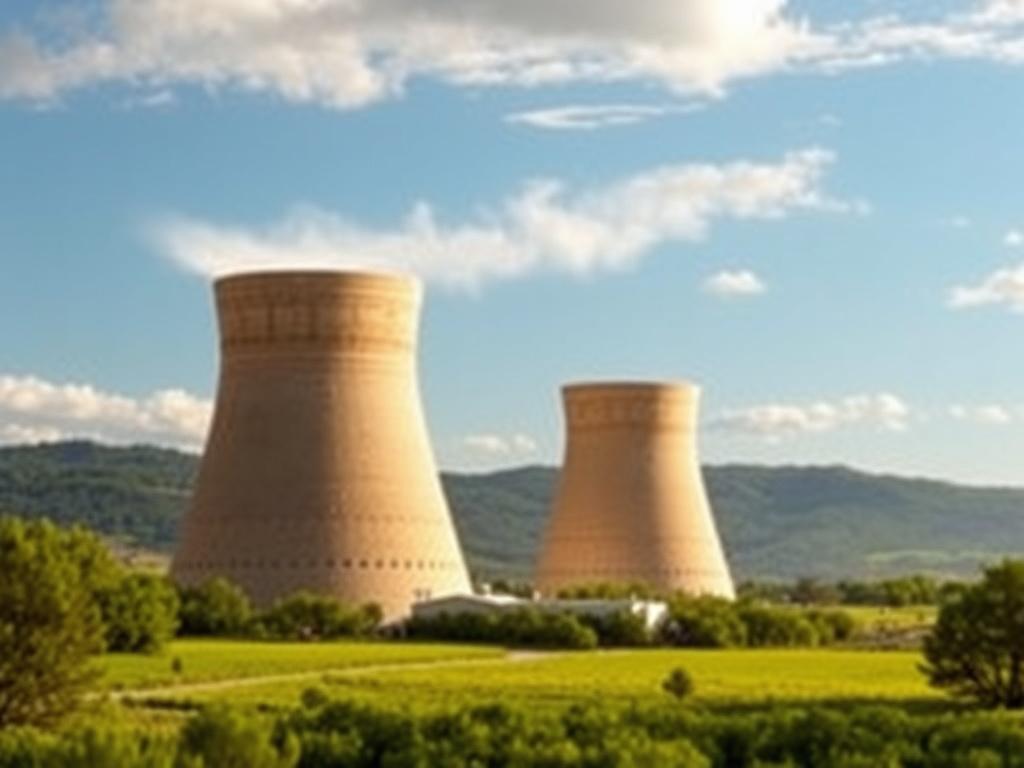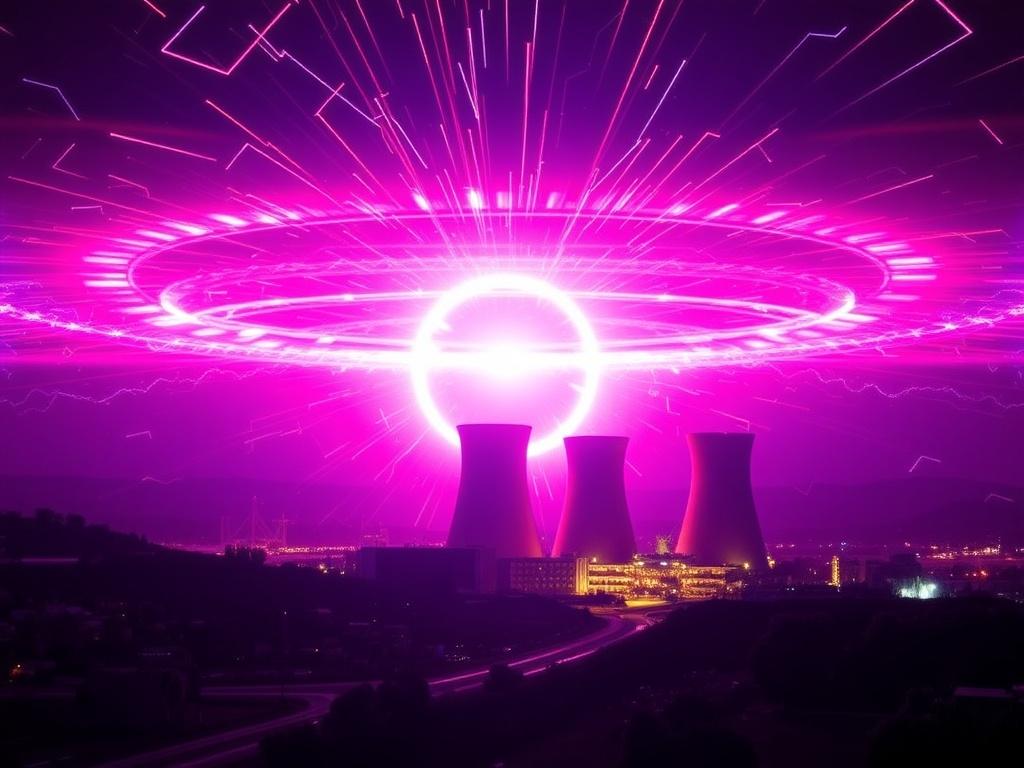- Understanding Nuclear Fusion
- The Challenge of Achieving Sustained Fusion Reactions
- Temperature: Reaching the Sun’s Furnace
- Pressure and Density
- Confinement Time: Holding the Plasma In
- Leading Technologies in Fusion Energy Research
- Magnetic Confinement Fusion: The Tokamak and Stellarator
- Inertial Confinement Fusion: The Power of Lasers
- Recent Breakthroughs: Are We Closer Than Ever?
- Record-Breaking Plasma Confinement
- Achieving Net Energy Gain
- Private Sector Involvement and Innovation
- Key Ingredients for Fusion Fuel: Deuterium and Tritium
- Challenges Remaining on the Path to Fusion Power
- The Environmental and Economic Promise of Fusion Energy
- Fusion Compared to Other Clean Energy Sources
- Global Collaborations Driving Fusion Forward
- Looking Ahead: When Could Fusion Energy Become a Reality?
- Summary of Current Fusion Approaches and Milestones
- What Does “Closer Than Ever” Really Mean?
- How Can You Follow Fusion’s Progress?
- Potential Impacts on Society and the Energy Landscape
- Conclusion
Nuclear fusion has long been hailed as the ultimate solution to humanity’s growing energy needs. For decades, scientists and engineers have dreamed of harnessing the same process that powers the sun to generate clean, limitless energy on Earth. But nuclear fusion remains a tantalizing challenge, one that requires mastering extreme temperatures, complex physics, and advanced materials. So, are we closer than ever to making nuclear fusion a practical reality? In this article, we will explore the current state of fusion research, recent breakthroughs, technological hurdles, and what the future might hold for this promising energy source.
Understanding Nuclear Fusion
At its core, nuclear fusion is the process where two light atomic nuclei collide and merge to form a heavier nucleus, releasing enormous amounts of energy. This is the mechanism that fuels stars, including our sun, where hydrogen atoms fuse under intense pressure and temperature to form helium, radiating vast amounts of energy in the process.
Unlike nuclear fission, the process used in today’s nuclear power plants—the splitting of heavy nuclei like uranium to release energy—fusion offers several significant advantages. Fusion produces minimal radioactive waste, no greenhouse gas emissions, and utilizes abundant fuel sources like isotopes of hydrogen (deuterium and tritium). However, reproducing the sun’s conditions on Earth is far from simple. It demands creating plasma at temperatures exceeding 100 million degrees Celsius and maintaining it long enough for fusion reactions to occur at a net energy gain.
The Challenge of Achieving Sustained Fusion Reactions
Achieving sustained nuclear fusion requires overcoming three main hurdles: high temperature, sufficient pressure, and confinement time. Together, these form the so-called “fusion triple product,” which must meet or exceed specific thresholds to produce more energy than is consumed.
Temperature: Reaching the Sun’s Furnace
The fuel needs to be heated to temperatures of about 150 million degrees Celsius, ten times hotter than the sun’s core. At these temperatures, electrons separate from atomic nuclei, creating a plasma—a hot, charged gas capable of sustaining fusion reactions. The challenge is not just reaching this temperature but holding it steady and preventing the plasma from coming into contact with any material surfaces.
Pressure and Density
High pressure and density maximize the chances of nuclei colliding and fusing. On the sun, gravity provides immense pressure, squeezing atoms together. On Earth, replicating this pressure requires either compressing the fuel rapidly, such as in inertial confinement methods using lasers, or confining plasma with magnetic fields in devices like tokamaks.
Confinement Time: Holding the Plasma In
Even with high temperature and density, fusion can only occur if the plasma remains stable and confined long enough for interactions to take place. Magnetic confinement fusion (MCF) and inertial confinement fusion (ICF) are two leading methods aimed at achieving this delicate balance.
Leading Technologies in Fusion Energy Research
Scientists have pursued various approaches to tame fusion energy. The two most prominent are magnetic confinement and inertial confinement, each with its strengths and challenges.
Magnetic Confinement Fusion: The Tokamak and Stellarator
The tokamak is arguably the most well-known fusion device. It uses strong magnetic fields to confine plasma in a toroidal (doughnut-shaped) chamber, preventing it from touching the vessel walls. The ITER project, currently under construction in France, represents the largest and most ambitious tokamak experiment to date.
In contrast, the stellarator uses twisted magnetic fields generated by external coils to achieve plasma confinement. Examples include the Wendelstein 7-X in Germany, which seeks to address some stability issues inherent in tokamaks without the need for a plasma current.
Inertial Confinement Fusion: The Power of Lasers
Inertial confinement fusion involves compressing a small capsule of fusion fuel using intense laser beams or particle beams. The rapid compression and heating can initiate fusion reactions on very short timescales (nanoseconds). Facilities like the National Ignition Facility (NIF) in the United States are at the forefront of this approach.
Recent Breakthroughs: Are We Closer Than Ever?
In recent years, fusion research has experienced exciting developments hinting that practical fusion energy might soon be within reach. Let’s look at some key breakthroughs and what they mean.
Record-Breaking Plasma Confinement
In 2022 and 2023, several major tokamak experiments reported record durations of plasma confinement at fusion-relevant temperatures. For instance, the EAST tokamak in China maintained plasma for over 1050 seconds at 100 million degrees Celsius. These results demonstrate progress in plasma control and stability—critical for sustained energy production.
Achieving Net Energy Gain
One of the holy grails of fusion is net energy gain, where the energy produced by fusion reactions exceeds the energy used to initiate and sustain them. In late 2022, the National Ignition Facility announced a major milestone by achieving “ignition” — a fusion energy output exceeding the laser input energy in a single experiment. While this achievement was on a tiny scale and only momentary, it represents a monumental leap forward and energizes the fusion community worldwide.
Private Sector Involvement and Innovation
The past decade has seen an influx of private investment into fusion energy startups. Companies like Commonwealth Fusion Systems, TAE Technologies, and Helion Energy are exploring novel methods to reach fusion more rapidly. These efforts introduce fresh ideas, innovative technology, and accelerated timelines that complement traditional government-funded research.
Key Ingredients for Fusion Fuel: Deuterium and Tritium
When discussing fusion fuel, two hydrogen isotopes take center stage: deuterium and tritium. Here is a simple breakdown of their characteristics:
| Isotope | Symbol | Natural Abundance | Fuel Source | Role in Fusion |
|---|---|---|---|---|
| Deuterium | ²H or D | About 0.015% of natural hydrogen | Extracted cheaply from seawater | Common fusion fuel, stable isotope |
| Tritium | ³H or T | Rare and radioactive with 12.3-year half-life | Produced in nuclear reactors or bred from lithium | Fuses easily with deuterium, releasing large energy |
Because tritium is rare and unstable, fusion reactors often plan to breed tritium from lithium blankets surrounding the reactor, ensuring a sustainable fuel cycle.
Challenges Remaining on the Path to Fusion Power
Despite recent excitement, several formidable challenges remain before nuclear fusion becomes an everyday energy source.
- Materials Engineering: The reactor walls and components must endure extreme neutron bombardment and heat fluxes without degrading.
- Plasma Instabilities: Managing turbulence and sudden disruptions in plasma remains an ongoing difficulty for stable confinement.
- Cost and Scale: Fusion reactors are large, complex, and expensive projects with long development timelines that require sustained funding.
- Fuel Supply Logistics: Producing and supplying tritium in sufficient quantities necessitates dedicated breeding and handling technologies.
- Energy Capture and Conversion: Efficiently converting fusion energy (mostly high-energy neutrons) into electricity through heat exchange systems is essential.
The Environmental and Economic Promise of Fusion Energy

If successfully developed, nuclear fusion could transform the global energy landscape. Its environmental benefits include near-zero greenhouse gas emissions during operation, no air pollution, and a negligible long-lived radioactive waste footprint compared to fission reactors. Economically, fusion offers the promise of abundant base-load power using easily accessible fuel sources, potentially stabilizing energy prices and enhancing energy security worldwide.
Moreover, fusion energy does not carry the same risks as fission reactors, such as meltdown or proliferation concerns, making it a more politically feasible option for many countries. These advantages have motivated national governments and international collaborations to continue investing heavily in fusion research.
Fusion Compared to Other Clean Energy Sources
Let’s consider how fusion stacks up against other popular clean energy technologies:
| Energy Source | Carbon Emissions | Fuel Abundance | Energy Density | Intermittency |
|---|---|---|---|---|
| Nuclear Fusion | Near zero | High (sea water and lithium) | Extremely high | Continuous, controllable |
| Solar | Near zero | Abundant (sunlight) | Low (requires large area) | Intermittent (daylight only) |
| Wind | Near zero | Abundant | Moderate | Intermittent and variable |
| Nuclear Fission | Low | Finite, uranium supplies limited | High | Continuous, controllable |
Fusion’s ability to provide stable, high-density energy without the waste or intermittency issues of other sources keeps it a compelling vision for the future.
Global Collaborations Driving Fusion Forward
Fusion research is a quintessentially international endeavor. The scale and complexity of fusion projects demand cooperation and shared knowledge across borders. The ITER project, funded and managed by an international consortium of 35 countries, including the EU, China, India, Japan, Russia, South Korea, and the United States, stands as the largest collaborative fusion experiment ever undertaken.
These countries share expertise, technology, and financial resources to accelerate fusion development, demonstrating a united commitment to tackling global energy challenges. Besides ITER, smaller collaborative labs and agreements further boost knowledge exchange and innovation in fusion science.
Looking Ahead: When Could Fusion Energy Become a Reality?
Predicting when nuclear fusion will become a commercially viable energy source remains difficult. Optimistic estimates suggest the mid-2030s for demonstration power plants that produce electricity to the grid, while widespread deployment could come several decades later. Fusion’s path is complicated by technological challenges, regulatory hurdles, and the need for continued investment.
Yet, with the recent scientific milestones and increasing participation from the private sector, many experts believe we are indeed closer than ever before. Continued progress in materials science, plasma physics, and engineering will be crucial to translating fusion from an experimental curiosity into a cornerstone of future energy systems.
Summary of Current Fusion Approaches and Milestones
Below is a brief overview of key fusion concepts and recent milestones:
| Fusion Approach | Key Facility/Project | Recent Milestone | Projected Timeline |
|---|---|---|---|
| Magnetic Confinement (Tokamak) | ITER (France) | Construction ongoing; plasma experiments planned for late 2020s | 2030s demonstration reactors |
| Magnetic Confinement (Stellarator) | Wendelstein 7-X (Germany) | Achieved improved plasma confinement and stability | Ongoing research, informing next-gen designs |
| Inertial Confinement | National Ignition Facility (USA) | First net energy gain in laser shots (2022) | Further energy gain and scaling |
| Private Sector Innovations | Commonwealth Fusion Systems, TAE Technologies, et al. | Novel magnets, compact devices, alternative fuels | Demonstration projects in 2020s–2030s |
What Does “Closer Than Ever” Really Mean?
The phrase “closer than ever” in nuclear fusion describes a multifaceted collection of achievements: improved plasma control, record energy outputs, successful international projects, and growing momentum from private companies. These factors collectively enhance optimism but do not mean fusion is just around the corner.
Fusion still requires breakthroughs in scale-up, materials durability, and cost reduction before it can compete with existing energy sources. However, achieving net energy gain and maintaining plasma for unprecedented durations shows progress from theoretical possibility to practical feasibility.
How Can You Follow Fusion’s Progress?
For those interested in staying updated on nuclear fusion’s journey, resources abound. Scientific journals, specialized news websites, and institutional announcements regularly share breakthroughs. Organizations like ITER, the International Atomic Energy Agency (IAEA), and fusion startups publish accessible updates that track developments closely.
Some attention-grabbing ways to engage with fusion include attending public lectures, watching documentaries, and even participating in citizen science or advocacy projects supporting clean energy innovation.
Potential Impacts on Society and the Energy Landscape

If nuclear fusion becomes commercially viable, the societal effects could be profound. Here are some potential impacts to imagine:
- Massively expanded clean energy supply, reducing dependence on fossil fuels
- Economic growth fueled by new industries and advanced technologies
- Mitigation of climate change through near-zero emissions power sources
- Increased energy access globally, including in developing regions
- Reduced geopolitical tensions around fossil fuel resources
These potentials help explain why fusion remains one of the most exciting frontiers in energy science today.
Conclusion
Nuclear fusion has long been a symbol of clean, powerful energy for the future, and recent breakthroughs suggest we are indeed closer than ever to realizing this dream. Advances in plasma confinement, net energy gain experiments, and collaborative international efforts illustrate genuine progress. Nevertheless, formidable scientific, technical, and economic challenges remain before fusion can become a practical, widespread energy source. The continued fusion of public and private investment, global cooperation, and innovative technologies will dictate how soon fusion joins our energy mix. While fusion is no longer purely theoretical, it is a journey still unfolding, one step at a time toward a potentially transformative energy breakthrough for humanity.
Как вам статья?







